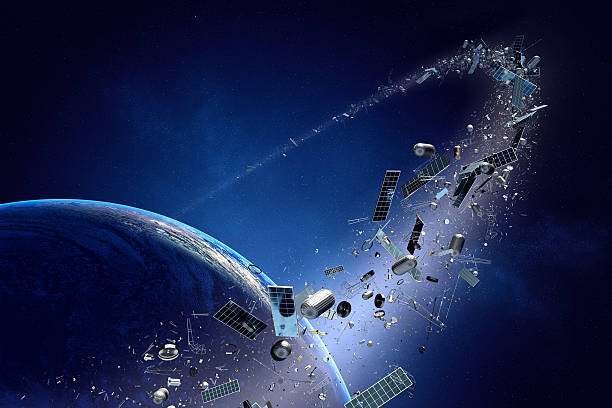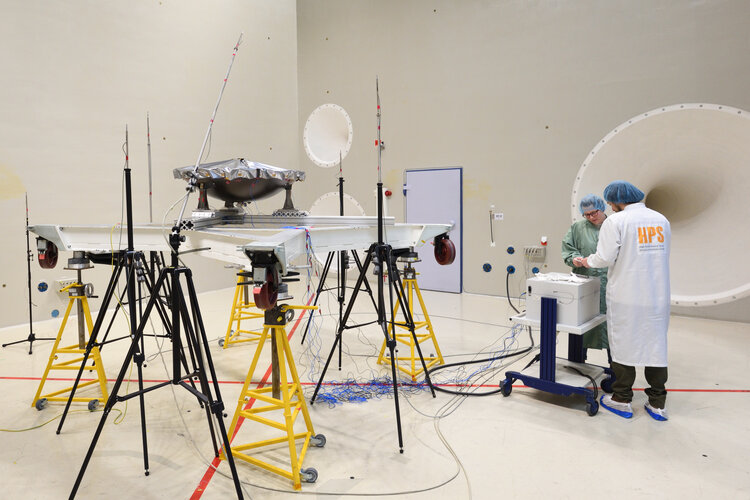CAPSTONE mission demonstrating utility and resilience at the Moon
Friday, 10 February 2023 04:36 The CAPSTONE spacecraft continues to operate at the Moon and the vehicle is happy and healthy. The mission has accomplished 4 mission objectives and is making progress on additional objectives. Two mission objectives were completed during the transfer to the Moon and both directly informed Artemis 1 secondary payloads with regard to radio and ground station performance.
The system has been
The CAPSTONE spacecraft continues to operate at the Moon and the vehicle is happy and healthy. The mission has accomplished 4 mission objectives and is making progress on additional objectives. Two mission objectives were completed during the transfer to the Moon and both directly informed Artemis 1 secondary payloads with regard to radio and ground station performance.
The system has been JUICE's final take-off before lift-off
Friday, 10 February 2023 04:36 The Airbus-built JUICE spacecraft is set to embark on a pioneering mission to explore the Jupiter system and study its magnetic fields. The decade-long mission, managed by the European Space Agency (ESA), will search for signs of life-bearing conditions on the Jovian moons, Ganymede, Europa, and Callisto.
These moons have long been of interest to scientists and researchers due to their pot
The Airbus-built JUICE spacecraft is set to embark on a pioneering mission to explore the Jupiter system and study its magnetic fields. The decade-long mission, managed by the European Space Agency (ESA), will search for signs of life-bearing conditions on the Jovian moons, Ganymede, Europa, and Callisto.
These moons have long been of interest to scientists and researchers due to their pot NASA's NuSTAR reveals hidden light shows on the Sun
Friday, 10 February 2023 04:36 Even on a sunny day, human eyes can't see all the light our nearest star gives off. A new image displays some of this hidden light, including the high-energy X-rays emitted by the hottest material in the Sun's atmosphere, as observed by NASA's Nuclear Spectroscopic Telescope Array (NuSTAR). While the observatory typically studies objects outside our solar system - like massive black holes and co
Even on a sunny day, human eyes can't see all the light our nearest star gives off. A new image displays some of this hidden light, including the high-energy X-rays emitted by the hottest material in the Sun's atmosphere, as observed by NASA's Nuclear Spectroscopic Telescope Array (NuSTAR). While the observatory typically studies objects outside our solar system - like massive black holes and co HETDEX reveals galaxy gold mine in first large survey
Friday, 10 February 2023 04:36 Astronomers have barely scratched the surface of mapping the nearly endless stars and galaxies of the heavens. Using supercomputers, researchers with The University of Texas at Austin have has now revealed the locations of more than 200,000 new astronomical objects. Their goal is to map even more and use that knowledge to predict the ultimate fate of the universe.
The Hobby-Eberly Telescop
Astronomers have barely scratched the surface of mapping the nearly endless stars and galaxies of the heavens. Using supercomputers, researchers with The University of Texas at Austin have has now revealed the locations of more than 200,000 new astronomical objects. Their goal is to map even more and use that knowledge to predict the ultimate fate of the universe.
The Hobby-Eberly Telescop NASA turns to AI to design mission hardware
Friday, 10 February 2023 04:36 Spacecraft and mission hardware designed by an artificial intelligence may resemble bones left by some alien species, but they weigh less, tolerate higher structural loads, and require a fraction of the time parts designed by humans take to develop.
"They look somewhat alien and weird," Research Engineer Ryan McClelland said, "but once you see them in function, it really makes sense."
Spacecraft and mission hardware designed by an artificial intelligence may resemble bones left by some alien species, but they weigh less, tolerate higher structural loads, and require a fraction of the time parts designed by humans take to develop.
"They look somewhat alien and weird," Research Engineer Ryan McClelland said, "but once you see them in function, it really makes sense." AST SpaceMobile announces collaboration with Zain KSA
Friday, 10 February 2023 04:36 AST SpaceMobile, Inc. (NASDAQ: ASTS), has announced a non-binding memorandum of understanding with Zain KSA, a leading telecommunications operator in Saudi Arabia. The signing took place at the international LEAP 2023 Tech Conference in Riyadh.
The MoU would enable AST SpaceMobile and Zain KSA to collaborate towards new telecom solutions and satellite-based digital services in Saudi Arabia
AST SpaceMobile, Inc. (NASDAQ: ASTS), has announced a non-binding memorandum of understanding with Zain KSA, a leading telecommunications operator in Saudi Arabia. The signing took place at the international LEAP 2023 Tech Conference in Riyadh.
The MoU would enable AST SpaceMobile and Zain KSA to collaborate towards new telecom solutions and satellite-based digital services in Saudi Arabia MDA secures new contract to supply Ka-band multibeam antennas for Argentina's ARSAT-SG1 Satellite
Friday, 10 February 2023 04:36 MDA Ltd. (TSX: MDA), a leading provider of advanced technology and services to the rapidly expanding global space industry, has announced a new contract award to design, build and supply all of the Ka-band multibeam antennas for the ARSAT-SG1 satellite. ARSAT is Argentina's national telecommunications company and ARSAT-SG1 will provide high-speed internet as well as digital video and voice servi
MDA Ltd. (TSX: MDA), a leading provider of advanced technology and services to the rapidly expanding global space industry, has announced a new contract award to design, build and supply all of the Ka-band multibeam antennas for the ARSAT-SG1 satellite. ARSAT is Argentina's national telecommunications company and ARSAT-SG1 will provide high-speed internet as well as digital video and voice servi Shenzhou XV astronauts take their first spacewalk
Friday, 10 February 2023 04:36 Shenzhou XV mission crew members have just concluded their first spacewalk, according to the China Manned Space Agency. The agency said in a news release early on Friday morning that mission commander Major General Fei Junlong and Senior Colonel Zhang Lu completed a seven-hour spacewalk and returned to the Wentian science module at 12:16 am (Beijing Time). The third crew member, Senior Colonel D
Shenzhou XV mission crew members have just concluded their first spacewalk, according to the China Manned Space Agency. The agency said in a news release early on Friday morning that mission commander Major General Fei Junlong and Senior Colonel Zhang Lu completed a seven-hour spacewalk and returned to the Wentian science module at 12:16 am (Beijing Time). The third crew member, Senior Colonel D Defense giants are hungry for space companies
Thursday, 09 February 2023 21:45
Large defense companies are itching to buy space assets as part of the market is on the verge of a shake-out, executives discussing deal-making in the industry said Feb.
SpaceX performs Starship static-fire test
Thursday, 09 February 2023 21:11
SpaceX fired nearly all of the engines in the booster of its Starship launch vehicle in a ground test Feb.
Kelly: As rivals challenge U.S. in space, commercial industry needs to ‘step up’
Thursday, 09 February 2023 21:05
In a keynote speech at the Federal Aviation Administration Commercial Space Transportation Conference, Kelly highlighted the accomplishments of the U.S.
Military agency praised for leading the way on laser communications
Thursday, 09 February 2023 19:50
By requiring suppliers of laser terminals to comply with a common set of standards, the U.S.
Boeing and Millennium cite benefits of partnership
Thursday, 09 February 2023 18:57
“There’s a handful of programs that we won that we would not have been able to win by ourselves and Boeing wouldn’t have been able to win by themselves,” said Millennium CEO Jason Kim.
A Russian satellite has broken into pieces, littering debris in space
Thursday, 09 February 2023 18:47
A Russian KOSMOS 2499 satellite broke up last month—for a second time—according to the Space Force's 18th Space Defense Squadron. In a recent tweet, the Space Force said they are currently tracking 85 individual pieces of debris at an altitude of 1,169 km (726 miles). The breakup occurred on January 4, 2023, but the reason for the disintegration remains unknown.
At this high altitude, it will take decades for the debris to deorbit and burn up in the Earth's atmosphere. The debris is located in an increasingly busy region in Earth's orbit.
#18SDS has confirmed the breakup of COSMOS 2499 (#39765, 2014-028E)—occurred Jan 4, 2023 at appx 0357 UTC. Tracking 85 associated pieces at est 1169 km altitude—analysis ongoing. #spacedebris#space@SpaceTrackOrg@US_SpaceCom@ussfspoc
— 18th Space Defense Squadron (@18thSDS) February 7, 2023
But this is actually the second breakup event of Kosmos 2499.
Sound test of Hera asteroid mission antenna
Thursday, 09 February 2023 17:35 Image:
Sound test of Hera asteroid mission antenna
Image:
Sound test of Hera asteroid mission antenna 
